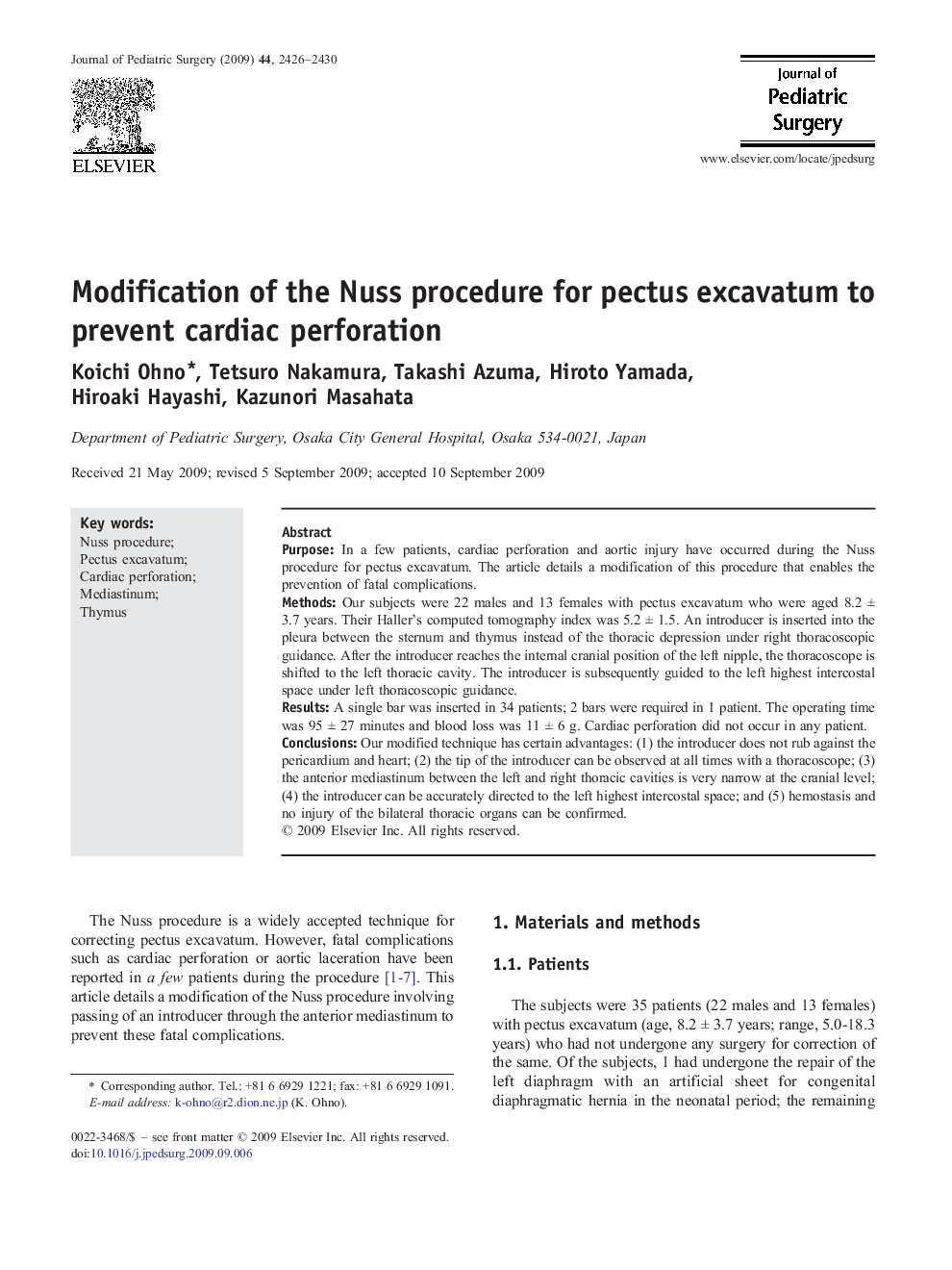| Article ID | Journal | Published Year | Pages | File Type |
|---|---|---|---|---|
| 4157849 | Journal of Pediatric Surgery | 2009 | 5 Pages |
PurposeIn a few patients, cardiac perforation and aortic injury have occurred during the Nuss procedure for pectus excavatum. The article details a modification of this procedure that enables the prevention of fatal complications.MethodsOur subjects were 22 males and 13 females with pectus excavatum who were aged 8.2 ± 3.7 years. Their Haller's computed tomography index was 5.2 ± 1.5. An introducer is inserted into the pleura between the sternum and thymus instead of the thoracic depression under right thoracoscopic guidance. After the introducer reaches the internal cranial position of the left nipple, the thoracoscope is shifted to the left thoracic cavity. The introducer is subsequently guided to the left highest intercostal space under left thoracoscopic guidance.ResultsA single bar was inserted in 34 patients; 2 bars were required in 1 patient. The operating time was 95 ± 27 minutes and blood loss was 11 ± 6 g. Cardiac perforation did not occur in any patient.ConclusionsOur modified technique has certain advantages: (1) the introducer does not rub against the pericardium and heart; (2) the tip of the introducer can be observed at all times with a thoracoscope; (3) the anterior mediastinum between the left and right thoracic cavities is very narrow at the cranial level; (4) the introducer can be accurately directed to the left highest intercostal space; and (5) hemostasis and no injury of the bilateral thoracic organs can be confirmed.
